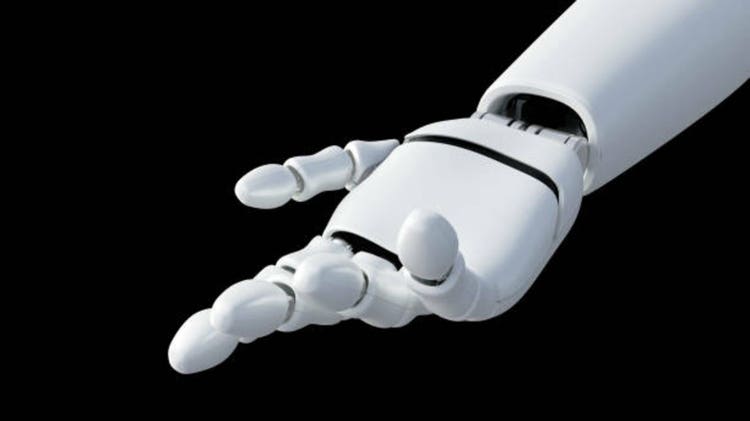Is Jack Ma's Ant Group Revolutionizing Robotics with a New Humanoid Robot?

Published: 2025-09-11 07:16:37 | Category: policy GNEWS Search
Ant Group has recently launched its first humanoid robot, showcasing significant advancements in robotics that blend medical and culinary capabilities. This move is part of China's broader initiative to compete with the United States in the field of next-generation technology, particularly in robotics.
Last updated: 11 September 2025 (BST)
Key Takeaways
- Ant Group's humanoid robot is designed for both medical assistance and culinary tasks.
- The unveiling represents a significant step for China in the global robotics race.
- The robot was developed by Shanghai Ant Lingbo Technology Co., also known as Robbyant.
- Ant Group aims to enhance healthcare and culinary services with this technology.
- The launch highlights the increasing integration of AI and robotics in everyday life.
The Rise of Humanoid Robots
Humanoid robots have been a topic of fascination for decades, often depicted in science fiction as companions or assistants. However, recent technological advancements have made them a reality. These robots are designed to interact with humans in a more natural and intuitive manner, making them suitable for various applications, from healthcare to hospitality.
Ant Group's Entry into Robotics
Ant Group, primarily known for its fintech solutions, has ventured into robotics through its subsidiary, Shanghai Ant Lingbo Technology Co. The company's foray into this sector is indicative of a strategic shift aimed at diversifying its technological portfolio and addressing emerging market needs.
Features of the Humanoid Robot
The newly unveiled humanoid robot is equipped with advanced AI capabilities that allow it to perform medical tasks such as monitoring patient health and assisting in rehabilitation. Additionally, it has culinary skills that enable it to prepare and serve food, making it a versatile addition to both healthcare and hospitality settings.
Why This Matters
The launch of Ant Group's humanoid robot is significant for several reasons. Firstly, it underscores the competitive landscape between China and the U.S. in the robotics arena. With the U.S. traditionally leading in technological innovation, China’s advancements signal a potential shift in the balance of power in this sector.
Market Implications
According to industry analysts, the global robotics market is expected to grow substantially in the coming years, with estimates projecting a compound annual growth rate (CAGR) of around 20% through the next decade. Ant Group's entry could spur more competition and innovation in this space, particularly given China's robust manufacturing capabilities and focus on technological development.
Potential Applications
The applications of humanoid robots extend beyond healthcare and culinary tasks. Industries such as retail, customer service, and even education could benefit from these advancements. For instance, robots could assist in delivering products in retail environments or serve as teaching aids in classrooms.
Challenges and Considerations
While the development of humanoid robots presents numerous opportunities, several challenges must be addressed. These include:
- Ethical considerations regarding human-robot interaction and employment impacts.
- Technical challenges in making robots reliable and capable of performing complex tasks.
- Regulatory hurdles that may arise as humanoid robots become more prevalent in society.
Regulatory and Ethical Implications
As humanoid robots become integrated into everyday life, regulatory frameworks will need to evolve to address safety, privacy, and employment concerns. Policymakers must consider how to balance innovation with societal impacts, ensuring that the benefits of robotics are maximised while minimising potential harms.
What’s Next for Ant Group and Robotics?
Looking forward, Ant Group plans to continue its investment in robotics and related technologies. This includes research and development to enhance the capabilities of its humanoid robot, as well as collaborations with healthcare and culinary institutions to better understand practical applications.
Conclusion
The unveiling of Ant Group's humanoid robot marks a pivotal moment in the intersection of technology and daily life. As the world watches how these innovations unfold, the implications for healthcare, culinary arts, and beyond will be profound. The ongoing developments in this field prompt questions about the future of work, human interaction with machines, and the ethical dimensions of robotics. How will we adapt to this new era of technology? Only time will tell.
#HumanoidRobots #AntGroup #RoboticsInnovation
FAQs
What is the main purpose of Ant Group's humanoid robot?
The humanoid robot developed by Ant Group is designed to assist in medical tasks and perform culinary functions, showcasing versatility in both healthcare and hospitality sectors.
How does this development impact the robotics industry?
Ant Group's entry into robotics highlights China's competitive stance in technology, potentially accelerating innovation and competition within the global robotics market.
What challenges do humanoid robots face?
Challenges include ethical concerns, technical reliability, and regulatory issues that need to be addressed as humanoid robots become more integrated into society.
What future applications can we expect from humanoid robots?
Future applications may include roles in retail, customer service, and education, enhancing efficiency and interaction across various sectors.
What are the ethical considerations surrounding humanoid robots?
Ethical considerations involve the implications of human-robot interaction, privacy concerns, and the potential displacement of jobs as robots take on more tasks.



